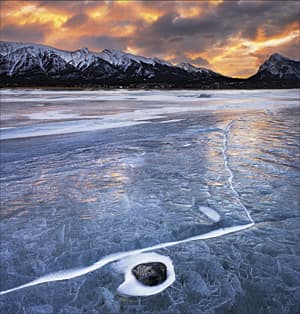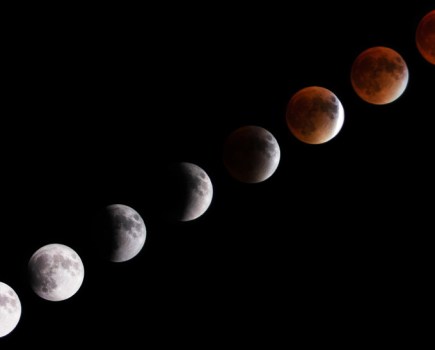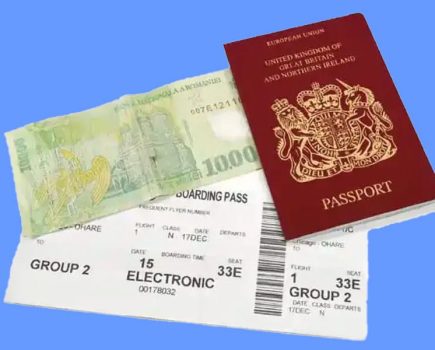There are countless photo competitions out there – our new photo competitions guide shows you what’s what and how to enter…

In photography, the road to success can seem very long and winding indeed. Establishing yourself in the business can take years of painstaking self-publicising, hard work behind the lens and in front of a computer screen. However, photo competitions can change all of that. Not only is it a chance for you to scoop a bag full of prizes, but also the chance to gain nationwide, if not worldwide, exposure for your work.
Photo competitions aren’t only for the aspiring professional photographer, however; even the budding amateur can gain something from the experience of entering some of numerous photo competitions out there. Not only do photo competitions give you a focus on a subject to shoot, often making you consider alternatives to your usual fodder, but the process of compiling and submitting an entry to photo competitions can give you valuable experience in assessing your own photography.
There is a wide range of photo competitions out there, with a range to suit every standard and every interest in photography. While there are several main, national yearly photo competitions that boast the biggest prize pools and the most exposure, the benefits of photo competitions can span right down to entering photo competitions run by your local newspaper, with any win or commendation bound to do wonders for your photographic career, and confidence.
So, what exactly are the photo competitions on offer? And, more important, what exactly is needed to stand a chance of winning a big prize? Follow our guide to find out more…
Photo competitions requirements
It’s worth taking a look at what exactly the competition is really looking for. While you may think that it’s as simple as sending off your best image and waiting to claim your riches and acclaim, it’s rarely so. More often than not, larger photo competitions will have strict guidelines as to the format your submission will take. If you’re submitting your images online, the chances are that the competition will require your images to be saved at a certain file size, with maximum dimensions and the like, so as to suit their web hosting service.
Also, beware the requirements with regards to how many images you submit and how they will be assessed. A large majority of photo competitions will be based around a portfolio, or at least have a portfolio category or element, and as such you will be required to submit a complete body of work rather than just one stunning image. The main idea with a portfolio category is to demonstrate excellence with a series of images that tie together, in some cases telling a story, rather than a collection of individual shots, so be sure to bear this in mind.
Photo rights
There have been several instances in recent times of smaller, less well-known and ‘newer’ competitions operating solely as a guise for what could be described as a ‘rights grab’. This is where the competition invites entries and in turn has it written in the small print of entries that it will retain all the rights, and therefore ownership, of your images. This means that the organisers of the competition will essentially build up an image library of thousands of images, all at the expense of a few prizes. This is frowned upon within the photographic industry, understandably, and few competitions manage to get away with such behaviour these days without public outcry encouraging them to change their requirements. Do be sure not to confuse this with conventional terms and conditions with regards to image rights, however – it’s standard for a competition to want rights to reproduce your image in promotional material, and will often state as much in their small print.
Prize fund
This may seem like stating the obvious, but always take a look at what the prize fund has on offer. Don’t be scared off if some photo competitions don’t have the headline-grabbing prizes and big money of some of their bigger counterparts; they’ll often make up for it with ‘money can’t buy’ type opportunities, such as national exposure or the photographic trip or experience of a lifetime. Have a hunt around, as even the smallest photo competitions could be worth putting your time and effort in to enter.
Image variety
If you think of the number of images judges have to sift through, often in the tens of thousands, you have to work pretty hard to get your image noticed. Bearing this in mind, try to interpret the rules and requirements of the photo competitions in such a way that allows you to submit a striking and different image. Try to avoid cliché shots if at all possible, and submit an image that leaps off of the page and can’t fail to grab the judges’ eyes.
Wildlife Photographer of the Year competition

Wildlife Photographer of the Year 2009 – Paul Hobson
One of the most famous of the national photography competitions, the Wildlife Photographer of the Year, owned by the Natural History Museum and BBC Wildlife Magazine, boasts a wide range of prizes and extensive national coverage. Winning and commended entries are exhibited both nationally and internationally. The exhibition including 2008 winners is still touring; for more information visit the competition’s website. www.nhm.ac.uk/wildphoto
Landscape Photographer of the Year competition

Landscape Photographer of the Year 2009 – Kate Barclay
The landscape photographer of the Year contest, also known as ‘Take a View’, is the brainchild of renowned landscape photographer Charlie Waite. The competition goes from strength to strength each year, demonstrating the popularity of landscape photography. With a total prize fund of over £20,000, plus an eight-week exhibition and publication in a book of the winners, the Landscape photographer of the year contest is always popular. www.take-a-view.co.uk
International Garden Photographer of the Year competition

International Garden Photographer of the Year 2009 – Raoul Slater
Now in its third year, the International garden photographer of the year competition sports a surprisingly broad range of categories in which to try your luck. Support by both the National Trust and the Royal Photographic society, a good prize pool and a place in the winners’ exhibition in Kew Gardens all make IGPOTY one of the standout national photo competitions, and this year’s deadline falls on 30th November. www.igpoty.com
Travel Photographer of the Year competition

Travel Photographer of the Year 2009 – Andrew Peacock
Amongst a broad range of travel photo competitions, the International Travel Photographer of the year is regarded as the definitive travel photography competition. One of the main focuses for the competition is to help showcase the work of the winning and commended photographers, and it can be a vital step towards making your way in the world of photography. www.tpoty.com
How to Win Photo Competitions – What makes a Winning Image
 First impressions are everything, and if you’re submitting an image or portfolio of images in the physical form then presentation can be the difference between simply entering the photo competitions and winning. Be sure to invest some time and effort on the processing of your images in preparation for print.
First impressions are everything, and if you’re submitting an image or portfolio of images in the physical form then presentation can be the difference between simply entering the photo competitions and winning. Be sure to invest some time and effort on the processing of your images in preparation for print.
Also, don’t be afraid to invest a little in the printing process – spending a bit of money on decent paper can improve the look of your images tenfold. Bear in mind size as well – submitting an A4 contact sheet with small thumbnails on it won’t do your images justice, and will make it very difficult for the judges to assess your images properly.
Finally, consider that once you post your images they’re out of your hands, and are at the mercy of the postman, with a fair chance that they’ll get creased in transit – why not mount your images on some black card, with the added bonus of making them stand out even more.
Strong Composition
Darwin’s portfolio of winning images all featured very strong composition. When considering capturing a landscape, many would focus in on the mountains and have them as the main feature of the frame. However, in the majority of Darwin’s images a strong foreground interest leads the eye through the frame and makes the image leap off the page.
Colour Contrast
Another way of making an image leap from the page is to include a contrast in colour, as Darwin has done in this image. The warm tones in the sky create an excellent juxtaposition for the cool colours on the ice in the foreground, with an extra added element of the oranges and yellows reflecting and creating a striking blend between the two.
Irregular Features
While some may think it’s easy to capture a striking landscape, a different side to a scene is the key to an award-winning image or portfolio. In this instance, Darwin has gone to extra lengths to locate an irregular ice formation and include it adeptly in the scene for extra interest.
Different Subject
You could be forgiven for thinking that the winner of Travel Photographer of the Year award is normally a portfolio of reportage images of far-flung lands. However, Darwin shows that applying some creative thinking to a competition entry can pay dividends and that doing the unexpected can often be more rewarding than following the herd.
Research
Getting the combination of a rare and irregular ice formation and such stunning light isn’t just a lucky coincidence – the stunning scene is the result of hours and hours of extensive research. Darwin regularly visits a location with a ‘shortlist’ of factors he is looking for in a preconceived image, and then hunts for a location, and time of day, that ticks all the boxes.
Consistency
This image is one of a series that scooped Darwin the top prize, and it features several images taken in the same location. This shows that when it comes to putting together a winning portfolio, the judges will look for consistency of excellent work, rather than a wide range of differing images, as this will often better showcase a photographer’s skill and vision.
Now it’s your turn – other photo competitions to try:






